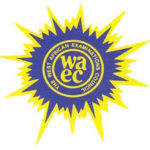Are you looking for WAEC Syllabus for Office Practice for 2021/2022? If you are interested in WAEC syllabus for Office Practice, then am pleased to let you know that the West African Examination Council (WAEC) has released the syllabus specially made for Office Practice.

Contents
About WAEC Syllabus
WAEC Syllabus is a subject outline that contains topics that a candidate intending to seat for an examination for that particular subject is required to cover prior to the exam in order to stand a chance of performing excellently in the exam.
Speaking of WAEC Syllabus for Office Practice, It therefore means that it’s an outline that contains all the topics for Office Practice that each candidate who enrol for Office Practice is expected to cover prior to the examination date. If you intend to sit for JAMB, checkout JAMB Syllabus for all Subjects here.
Other Resources That May Interest You
- How To Check WAEC Result
- WAEC Examination Time Table
- WAEC Registration
- JAMB Recommended Textbooks For All Subjects
WAEC Syllabus For Office Practice
Without wasting much time, the syllabus for Office Practice are as follows:
Aims And Objectives / Preamble
EXAMINATION SCHEME
There will be two papers, Paper 1 and Paper 2, which will constitute a composite paper and will be taken at a sitting.
PAPER 1: Will consist of fifty multiple choice objective questions, all of which should be answered within one hour for 50 marks.
PAPER 2: Will consist of a question on a simple case study and six other essay type questions. Candidates will be required to answer the question on the case study and any four of the other questions. The paper will carry 100 marks and last for 2 hours 10 minutes.
DETAILED SYLLABUS
| S/N | CONTENTS | NOTES |
| 1. | THE OFFICE | i. Definition of the office. ii. Functions of the office. iii. Layout of the office. iv. Principles of office organization. (a) Span of control, (b) Unity of control, (c) Unity of function, etc. v. Office procedures. vi. Sections of the office. |
| 2. | DEPARTMENTS IN AN ORGANIZATION | i. List of departments in an organization. ii. Functions of each department in an organization. iii. Organizational chart. |
| 3. | OFFICE EQUIPMENT | i. Meaning of office equipment. ii. Types of office equipment. Manual: (a) Typewriter, (b) Perforator, (c) Stapling machine, (d) Duplicating machine,etc. Electrical: (a) Typewriter, (b) Photocopier, (c) Shredding machine, (d) Computer, (e) Scanning machine, (f) Facsimile machine, etc. iii. Uses of office equipment. iv. Care of office equipment. |
| 4. | THE RECEPTION | i. Meaning of the reception. ii. Duties of the receptionist. iii. Documents handled by a receptionist. iv. Qualities of a receptionist v. Procedures for handling telephone calls. |
| 5. | OFFICE DOCUMENTS | i Meaning of office documents. ii Types of office documents. (a)Administrative (b) Sales (c) Stores (d) Purchasing iii. Uses of office documents. iv Preparation of office documents. |
| 6. | OFFICE CORRESPONDENCE | i. Meaning of office correspondence. ii. Types of office correspondence. (a) Memos, (b) Business letters, (c) Notice of meetings, (d) Minutes of meetings, (e) Reports, (f) Circulars. |
| 7. | i. Types of mail: (a) Personal mail, (b) Official mail, (c) Urgent mail, (d) Confidential mail ii. Classification of mail: (a) incoming mail, (b) Outgoing mail. iii. Procedures for handling incoming and outgoing mail. | |
| 8. | FILING | i. Definition of filing. ii. Systems of filing. (a) Vertical, (b) Lateral, (c) Electronic. iii. Classifications of filing (a) Alphabetical, (b) Chronological, (c) Numerical, (d) Geographical, (e) Alpha-numerical. (f) Subject iv. Purposes of filing. v. Steps involved in filing. vi. Filing equipment. |
| 9. | COMMUNICATION | i. Definition of communication ii. Importance of communication. iii. Types of communication (a) Verbal – Oral – Written (b) Non verbal – Visual – Audio – Audio-visual iv. Methods/Media of communication (a) Print (newspapers, magazines, directories, handbills, flyers, etc.) (b) Electronic (radio, television, audio and video conferencing, etc) v. Communication service providers: (a) NIPOST, (b) NITEL, (c) Media houses (d) Satellite stations (e) The internet (f) Global System of Mobile Communication (GSM) |
| 10. | MEETINGS | i. Definition of meeting. ii. Purpose of meeting iii. Types of meeting (a) Statutory meeting, (b) Emergency meeting, (c) Board meeting, (d) Management meeting, (e) Annual General Meeting, (f) Staff meeting, (g) Committee meeting. iv. Procedure for conducting a meeting (a) Opening prayer, (b) Agenda, (c) Chairman’s opening remarks, (d) Reading of the last minutes, (e) Correction ( if any), (f) Adoption of the last minutes, (g) Matters arising from the last minutes, (h) Main business, (i) Any other business (AOB), (j) Chairman’s closing remarks, (k) Adjournment/ closing, (l) Closing prayer. v. Meeting Terminologies: (a) Agenda, (b) Adoption, (c) A O B. (d) Adjournment, etc. vi. Roles of the chairman/secretary vii. Writing the minutes. |
| 11. | REPORT WRITING | i. Meaning of report. ii. Types of report – Formal (a) Short report (b) Long report (c) Investigative report (d) Routine/Periodic iii. Parts of a report. iv. Importance of report writing. |
| 12. | INFORMATION | i. Definition of information. ii. Types of information. iii. Uses of information. iv. Sources of information. v. Storage of information. vi. Qualities of good information (a) Timeliness, (b) Accuracy, (c) Speed of delivery, (d) Usability, etc. |
SUGGESTED READING TEXT
Modern Office Practice for Vocational Business Students By Amadin, M.S.
WAEC Syllabus For Office Practice PDF Download
We know you will likely be interested in downloading the PDF of the WAEC Syllabus for Office Practice, so we have provided you a link to download it to your phone or computer. Click the link below to download it.
Download Office Practice Syllabus.